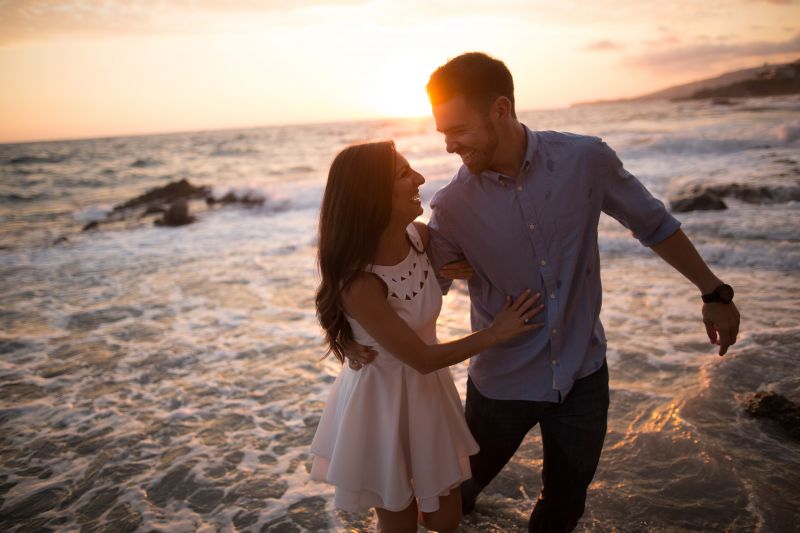
Golden hour has long been a favorite time for portrait photographers to take to the great outdoors and bask in the evening’s golden glow while capturing their subjects in warm, flattering light. Golden hour light can be so good on its own that a photographer should take care when adding light to not do more harm than good. Let’s talk about working with natural light at golden hour.
Natural light is free and ‘what-you-see-is-what-you-get’ so it’s an excellent starting point for those just beginning their endeavor in portrait photography. However, it’s important that once a photographer has advanced to a place where they feel comfortable using flash that they don’t forget how to go back to basics and work without. It’s surprisingly common for photographers to grow so accustomed to using flash in all their work that they feel uncomfortable without it, but for maximum versatility, you should be able to work with any lighting scenario.
[rewind:] PHOTOGRAPHY TIPS | FROM SHOOT TO POST: DEALING WITH ODD HUES
While shooting, remember to keep the final product and your camera’s limitations in mind. Remember that, to a point, shadow recovery is going to give you a lot more leeway than trying to recover blown highlights. With this in mind, shoot with a bias for preserving highlight detail.
THE SHOOT (SOOC Images)
DON’T DESTROY THE LIGHT
The reason we are discussing working with only natural light at golden hour as opposed to combining it with flash is that we want to keep the natural light’s character and not destroy its subtle nuance. Often reflectors are used to for fill-light, but do wield that light wisely.
BACKLIGHT
Backlighting is magic, and golden hour is the best time of day to use it naturally. Backlighting provides a gorgeous glow around subjects and their surroundings while keeping shadows on their faces soft. To backlight and keep detail in the background will require some fill. We recommend adding a soft fill from the white side of a reflector to pop in extra light in a subtle way.
USE HARD LIGHT AS AN ACCENT

You can also position the subject so that the hard sunlight strikes them at an angle, bringing out detail and structure. This is good for accentuating a fit subject’s defined muscles, for example. For best results, the sun will still be somewhat behind the subject, but at more of an angle than straight-up backlighting.
DON’T EXPOSE FOR SKIN
As mentioned earlier, we want to keep some detail in the highlight areas. We don’t necessarily need every pixel to retain detail, but we do want to keep enough highlight intact for the viewer to be able to tell what’s back there. If we are backlighting and exposing for the subject’s skin, we will certainly blow out the background more than we would like to for the style of photography that is being discussed here. It’s ok if the subject looks a bit dark (we’re not talking silhouette-dark unless you are intentionally shooting a silhouette.)
POST PROCESSING IN LIGHTROOM USING SLR LOUNGE PRESETS
After shooting with light post processing in mind, we are ready to create our final products. We will be using a simple editing style that can be done quickly and simply with our presets. These presets are available for download to all of our Premium subscribers and are also purchasable separately. The very simple ‘recipe:’
- Apply ‘Soft Color’ preset from Signature collection
- Bump up exposure to brighten to a better exposure for skin
- Warm up the white balance
- Apply a vignette using the radial filter around the subject with the ‘Burn (Exposure)’ preset
 Treat this as a starting point, and feel free to tweak as needed. Perhaps this will give you exactly what you want with no changes necessary, or perhaps our personal aesthetic or the image you are working with will require some slight changes. For example, if you feel the image needs a little more ‘punch,’ you can use the ‘Standard Color’ preset instead of ‘Soft Color.’
Treat this as a starting point, and feel free to tweak as needed. Perhaps this will give you exactly what you want with no changes necessary, or perhaps our personal aesthetic or the image you are working with will require some slight changes. For example, if you feel the image needs a little more ‘punch,’ you can use the ‘Standard Color’ preset instead of ‘Soft Color.’
For much more content like this where we’ll tackle just how to get the most out of any shoot and shot, check out our Shoot To Post workshop workshop, or stream it along with a plethora of photography and post-production education as an SLRL Premium member.







Get Connected!